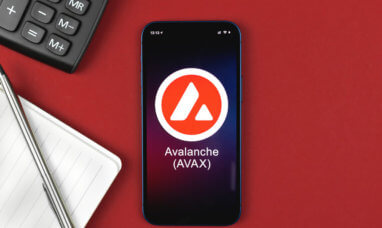Key Points
-
-
- Blue Chips are long-established, high-value companies offering well respected and widely utilized products or services
- Blue Chips are general components of the biggest market indexes such as the Dow Jones Industrial Average, S&P 500, NASDAQ-100 in the US, and TSX-60 in Canada. Blue-chips are usually the best dividend-paying stocks
- Blue Chips often pay dividends, but a company can still be classified as a blue chip if they do not pay dividends. This depends on the company and sector.
- A blue chip stock company with Stable Earnings, Solid Balance Sheets, is Well-Capitalized, and has a good Credit Rating.
-
Blue Chip Stocks Defined
In 1923 Oliver Gingold classified stocks on the Dow Jones Industrial Average index that traded above $200 per share as “Blue Chips,” named after the color of the highest value chips in a poker game.
Poker players bet in white, red, and blue chips respectively. The important distinction is that a high price tag doesn’t necessarily make a company a blue chip.
A blue chip stock is one that dominates in its chosen field and is generally highly valued. Blue chips generally pay dividends, but many do not, such as those in the tech sector. Dividend payments do sometimes add stability to share prices.
Blue chips are leaders in their industry and sell products or services that are known by most people, not just investors. Think of companies like Coca Cola. People buy their soft drink regardless of economic conditions. This leads to Coca Cola’s solid long-term growth, and allows it to weather volatile market conditions over time.
Still, blue chip companies are not immune! The 2008 financial crisis caused the bankruptcies of Lehman Brothers and General Motors, proving that even the biggest companies can take a hit during periods of uncertainty.
How to Classify a Company as a Blue Chip
The following are the main characteristics of blue chips and how to evaluate them.
Stable Earnings and Growth History
The primary thing that defines a blue-chip stock is stable, consistent earnings that demonstrate growth. This steady nature makes them a go-to choice for investors during a downturn or bear market.
This is the reason why blue chips are generally the most long-established and trusted companies that are publicly traded. The stability of blue chips is the reason they are usually considered a good long-term investment for beginners.
Stable history and good growth do not make blue chips immune to market volatility. During a downturn, they might take a hit; however, they are known to bounce back faster and weather the bear markets. They will usually have taken fewer losses because of how stable and well financed they are.
Solid Balance Sheets
A company’s balance sheet will tell you its total assets, and how that relates to its liabilities and shareholder equity. A balance sheet is essentially an overall indicator of a company’s health at a given moment in time.
The 3 parts of a balance sheet are Assets, Liabilities, and Shareholder Equity.
Assets
Assets are listed on a balance sheet in order of liquidity, meaning how easy it would be to sell them quickly. Two types of assets are current and non-current/long-term. Current assets can be converted to cash within 1 year. Long term assets cannot be converted to cash as quickly, and are seen as fixed or intangible, such as land or intellectual property respectively. . Assets include but are not limited to:
-
-
-
- Cash and cash equivalents
- Stocks they can sell
- Inventory/Product
- Expenses that are prepaid
- Cash and cash equivalents
-
-
Liabilities
Сonversely to assets, liabilities denote a company’s overall debt. This is an important characteristic of any balance sheet in that it simply tells you whether or not the company is profitable, for one thing.
This is not an exhaustive list, but liabilities on a company’s balance sheet will include:
-
-
-
- Payable Dividends
- Payable interest
- Wages
- Outgoing Payments to be made to customers/refunds
- Premiums, both earned and unearned
- Accounts Payable
- Long-term Liabilities: Long-term debt of a public company is the principal amount and interest on issued bonds.
- Pension Fund: Sometimes companies are required to pay into an employee pension fund that saves for their retirement.
- Deferred Tax Liability: When a company accrues debt through taxes but defers the debt for another year. This deferral is usually done as a way to meet requirements for financial reporting.
-
-
Shareholder Equity
Shareholder’s equity tells us a business’s overall net worth. It tells us how much money investors have put into a company. It’s broken down into three categories on a balance sheet: common shares, preferred shares, and retained earnings.
Blue Chips are Well-Capitalized
Blue chips must have a large market cap. Market cap is the measure of the size and value of a company, so of course, it’s a category to classify blue chips with. Blue Chips are often large-cap companies with $10 billion or more in market valuation. Also, they are generally a leader in their sector or industry, but that doesn’t mean there aren’t multiple blue chip companies in every industry.
Blue Chips Have a Solid Credit Rating (Little to No Debt)
Blue Chips tend to possess no debt or a healthy level of debt. Companies with a high level of debt tend to be ones that were established more recently, or are restructuring. The liabilities of the blue chip company tend to be manageable, but it’s not always the case.
A blue chip company may be heavily in debt but still have a good credit rating. Companies can lose blue chip status if their credit rating lowers to Junk Bond status. This means the company issuing the bonds is struggling financially and has a high risk of defaulting.
A bond default happens when the issuer (the company selling the bond) cannot make interest payments in the set period. Usually this happens when the company runs out of cash to pay bond holders.
High Return on Assets (ROA)
ROA is an indicator of how much profit a company can produce based on what it holds as assets.
It is a way to measure a company’s efficiency. Specifically, ROA measures how effectively the company’s management team uses the company’s assets to generate earnings. ROA is calculated as a %, and the higher it is, the better.
ROA Explained
ROA measures how well a company uses its assets to make revenue. It is used when comparing similar companies, or comparing a company to its previous performance. ROA does NOT take debt into account. It’s different from Return on Equity, which is a different calculation that tells us how well a company performs based on its total debt.
High Return on Equity
Remember shareholders equity from our balance sheets? One characteristic of blue chip stocks is the return on equity – this is the company’s net income divided by the shareholder’s equity. Return on Equity (ROE) comes out as a percentage, and “good” ROE varies depending on the sector. A common way for investors to determine a good ROE is knowing that the long-term average ROE of the S&P 500 is at about 14%. Anything below 10% is considered “poor.”
High Liquidity
Blue Chip stocks are always highly liquid. This means that there are many investors and traders buying and selling the security. A blue chip has a solid balance sheet with good fundamentals and is also highly liquid. This is what provides a blue chip stock its investment-grade bond rating (the stock is rated to have a low risk of default).
Blue Chips May or May Not Issue Dividends
Many blue chip companies issue dividends as part of their payout to shareholders. Most blue chips do this; however, a company can still be categorized as a blue chip without having any dividend payouts. For example, the three dominant tech giants Google, Facebook and Amazon have never paid a dividend, preferring to reinvest income into the company and product development.
Shareholders are okay with this as these companies thrive on innovation and need to finance their initiatives instead of maintenance of what they already have, since they grow so fast. Blue chip dividend stocks are still one of the most prized stocks for dividend investors.
How to Find Blue Chip Stocks
There is no “blue chip stock list” that can be called an official reference. This is because the market is volatile, and even blue chip companies can fail. The best blue chip stocks are those that can specifically serve your portfolio. You may see references to smaller groups of large stocks such as FAANG stocks, which stands for (Facebook, Amazon, Apple, Netflix and Google).
The Blue Chip Bottom Line
Blue chip stocks are by no means a quick way to make money as an investor. They require quite a bit of capital to start in, since the share prices for blue chip companies tend to be above $100 per share. Many brokerage firms now offer fractional shares as an alternative, allowing potential investors to buy smaller pieces of stock, making blue chips more accessible to the retail trader.
One thing you should watch for is whether or not a blue chip issues dividends. This is pivotal as it will greatly affect your portfolio and your investment strategy.
Blue chips are associated with strategies that involve long-term growth investing. It’s best to have a plan and a sufficient amount of cash to start before looking at blue chips as an investment.
Featured Image: Megapixl






